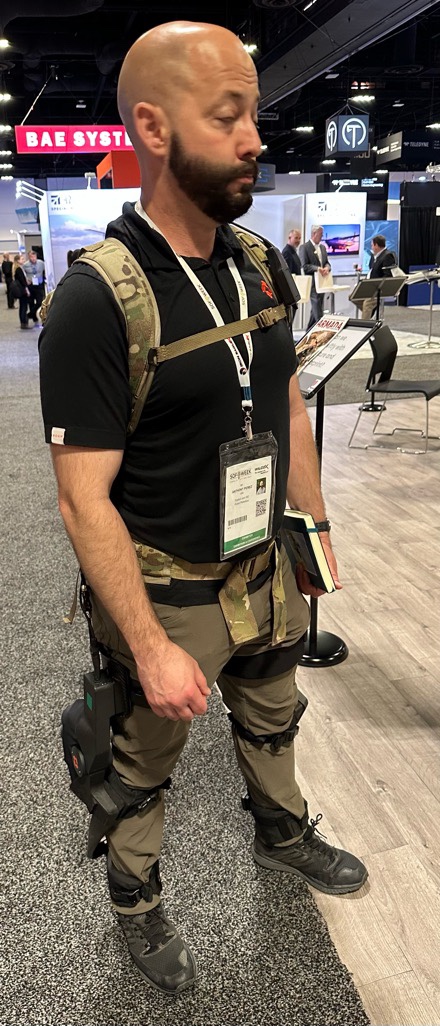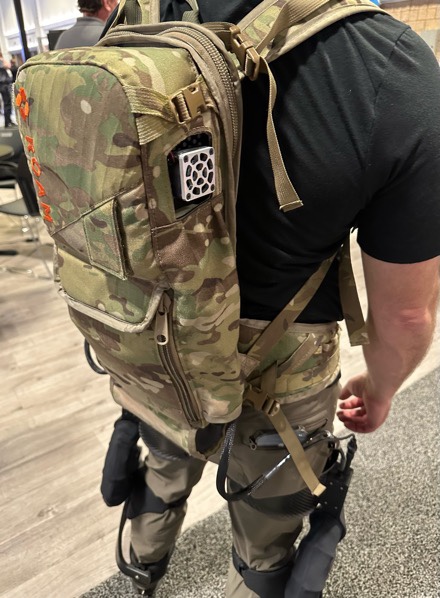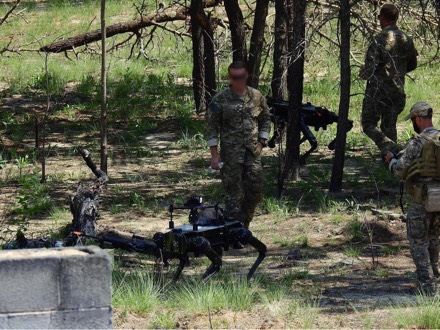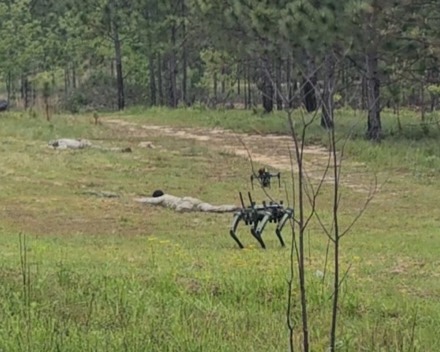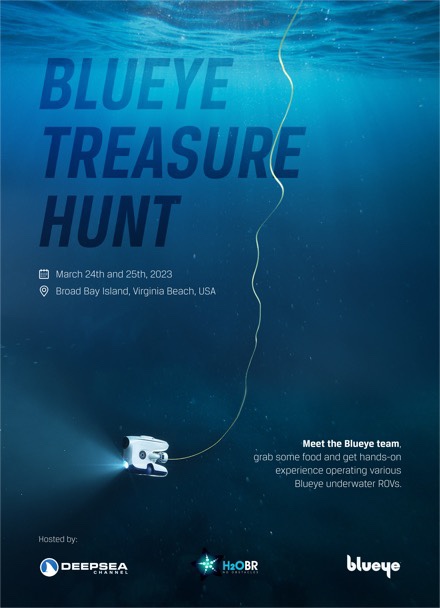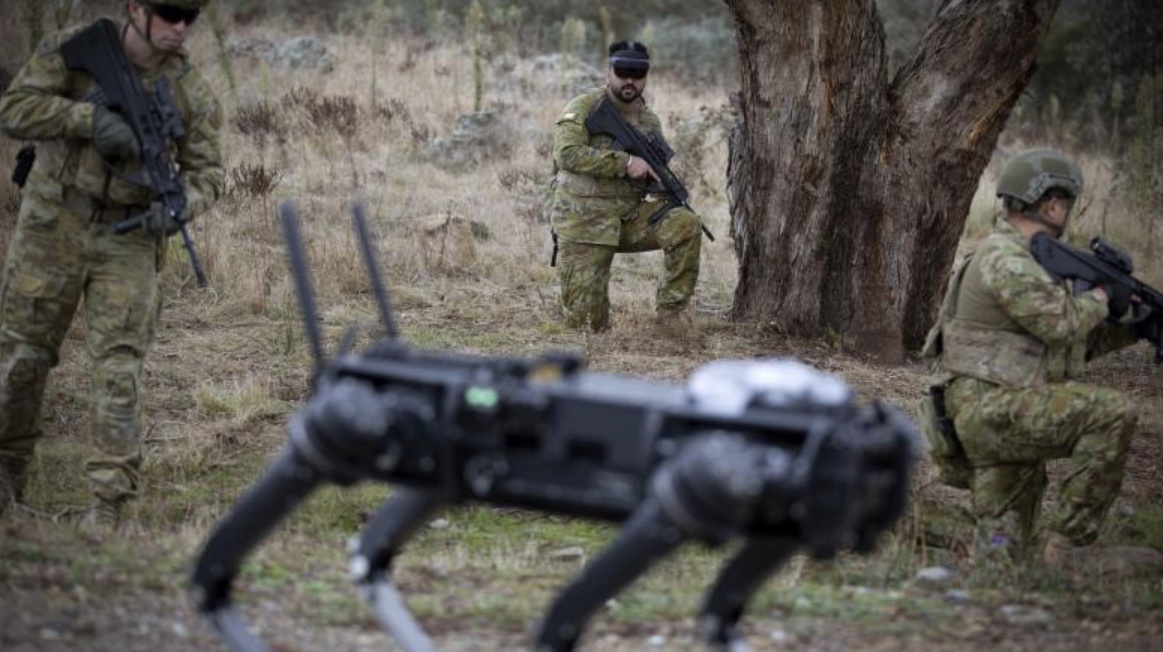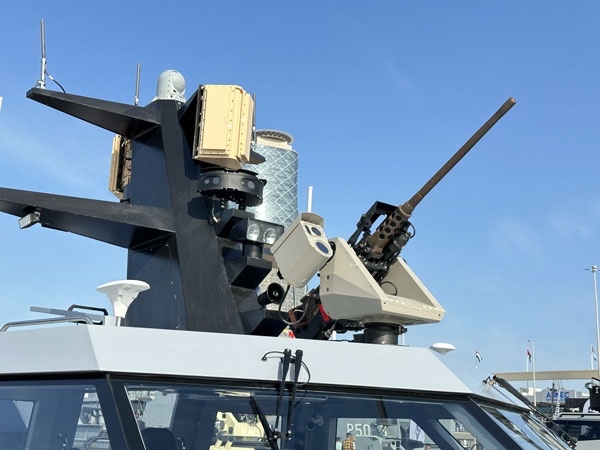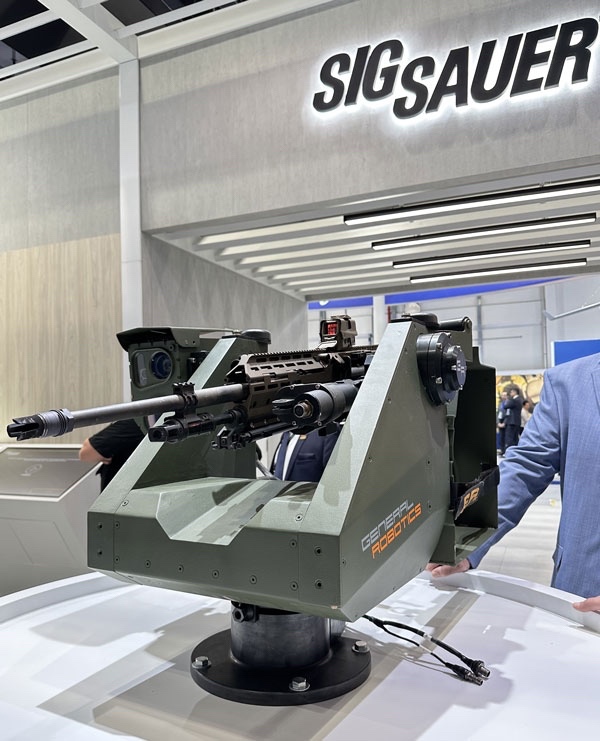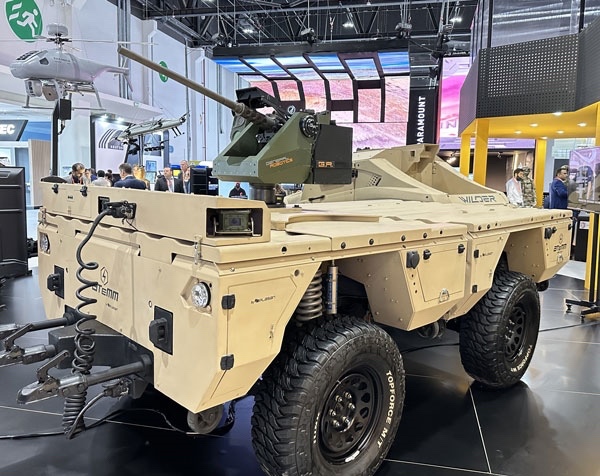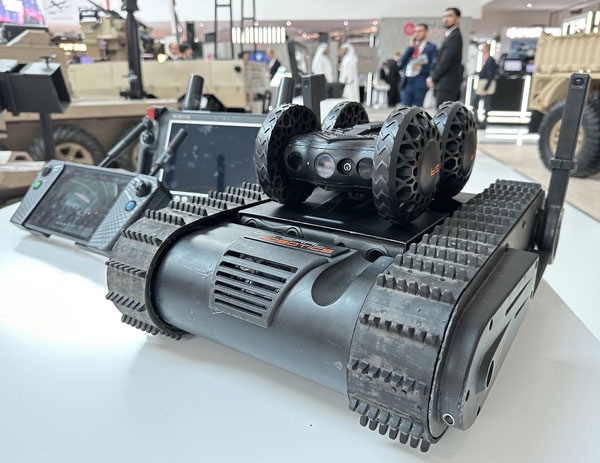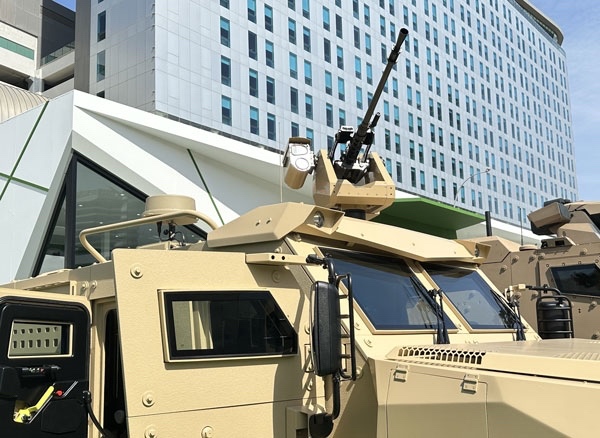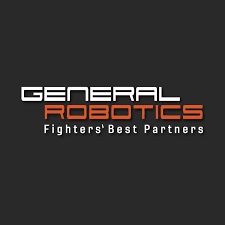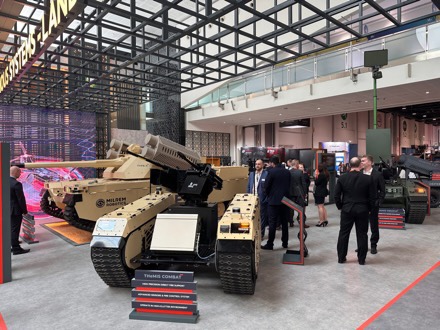Today SIG SAUER announced the purchase of Israeli manufacturer General Robotics. During January’s SIG Range Day in Las Vegas, they conducted a defense products demonstration featuring this new capability.
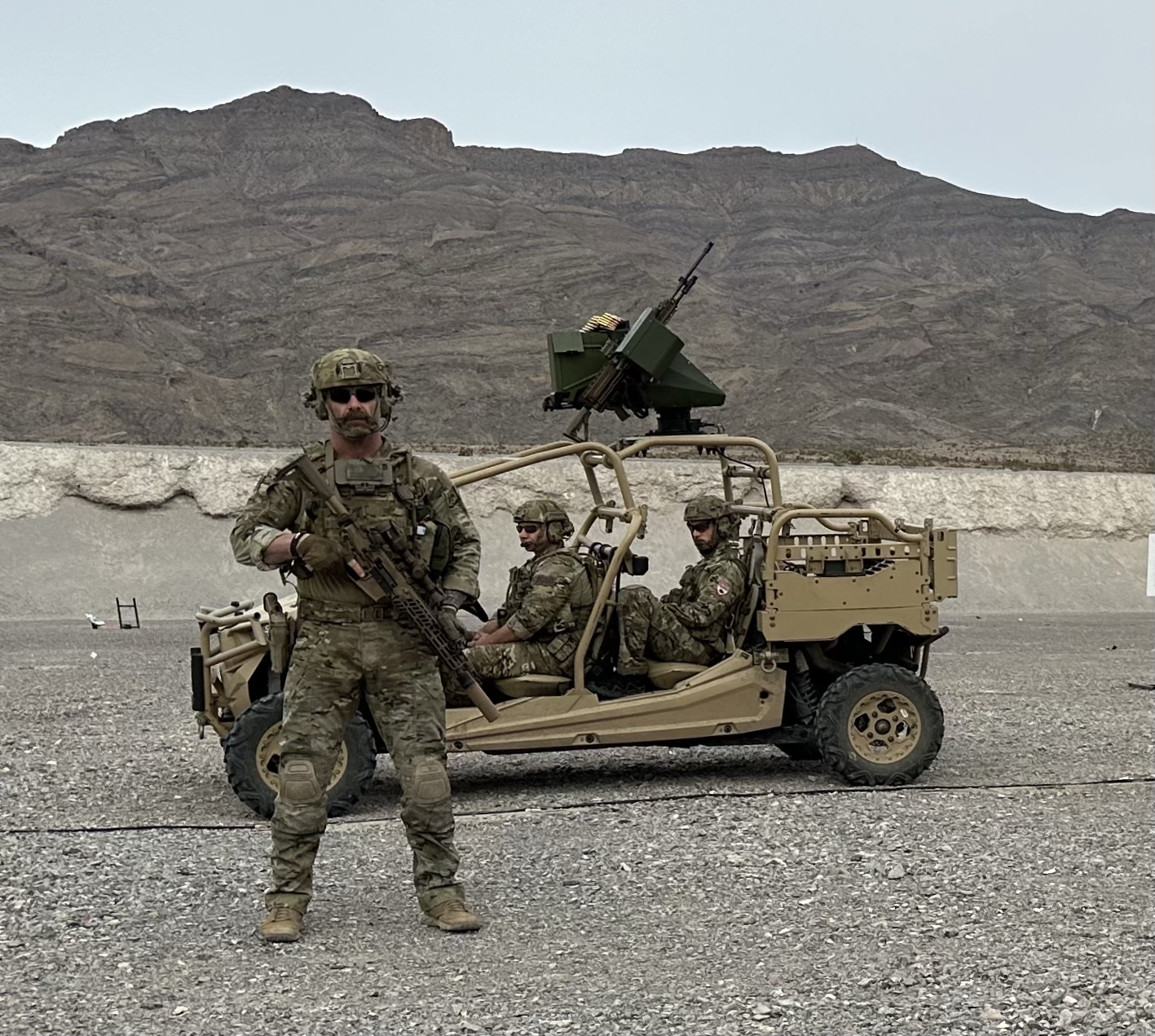
The demo featured a General Robotics Remote Weapons Station equipped Polaris All Terrain Vehicle laying down suppressive fire, outfitted with SIG’s MG 338 belt-fed machine in .338 Norma Mag.
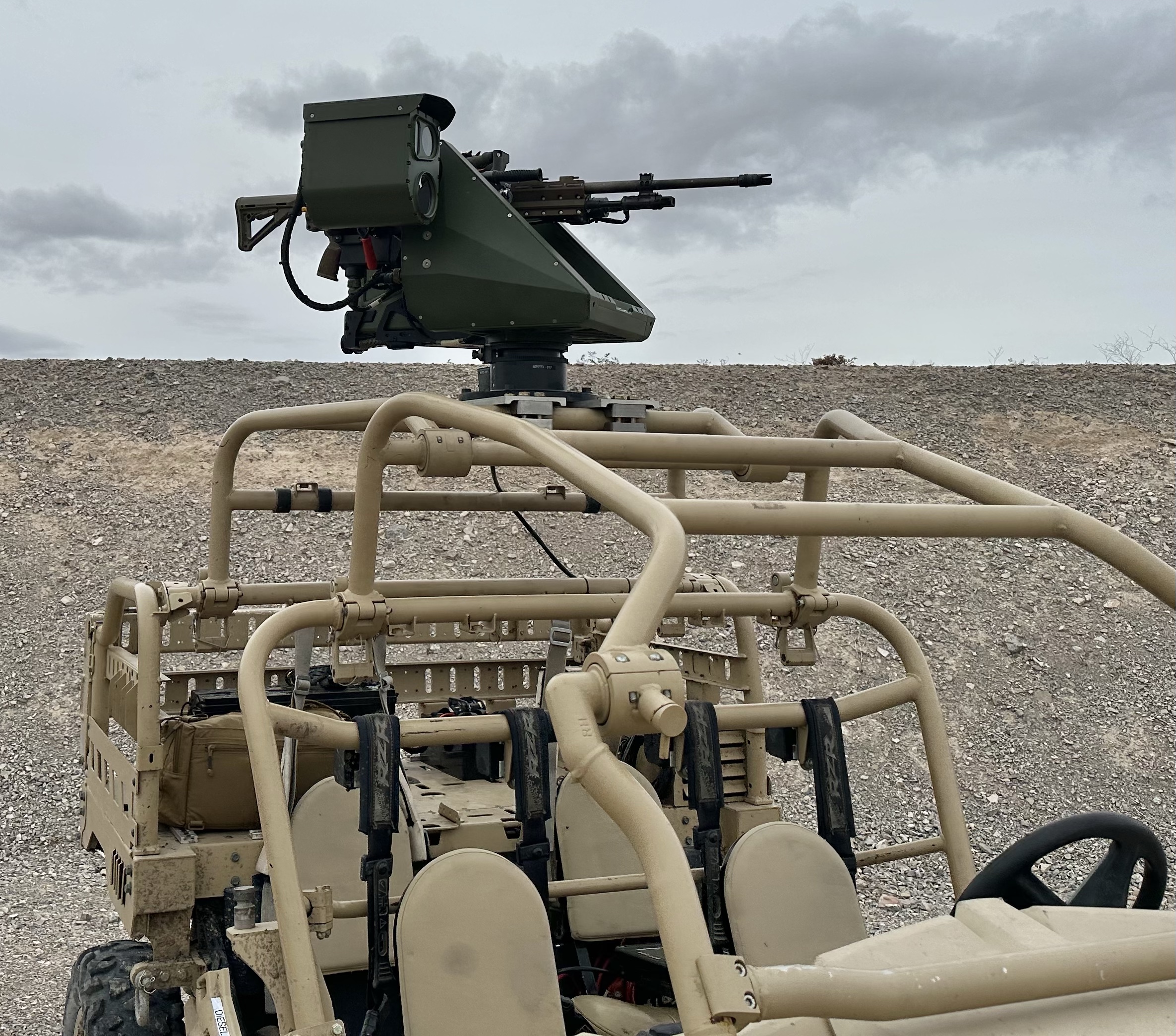
Named the PITBULL, it is a collaboration with SIG SAUER.
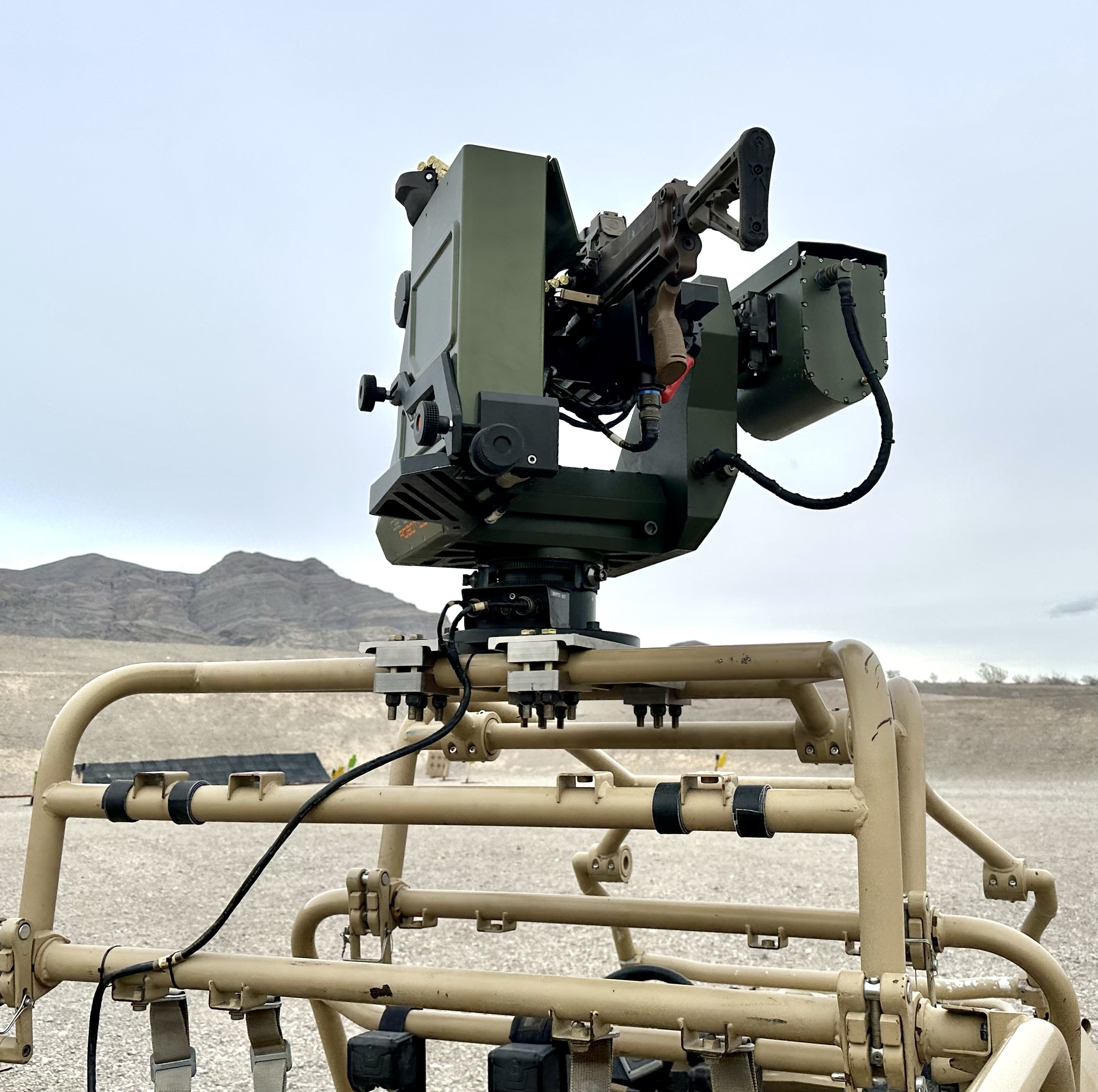
Not only does it provide stabilization for more accurate long range shots, but it also allows the operator to remain under cover, observing and if needed, engaging targets without risk of injury.
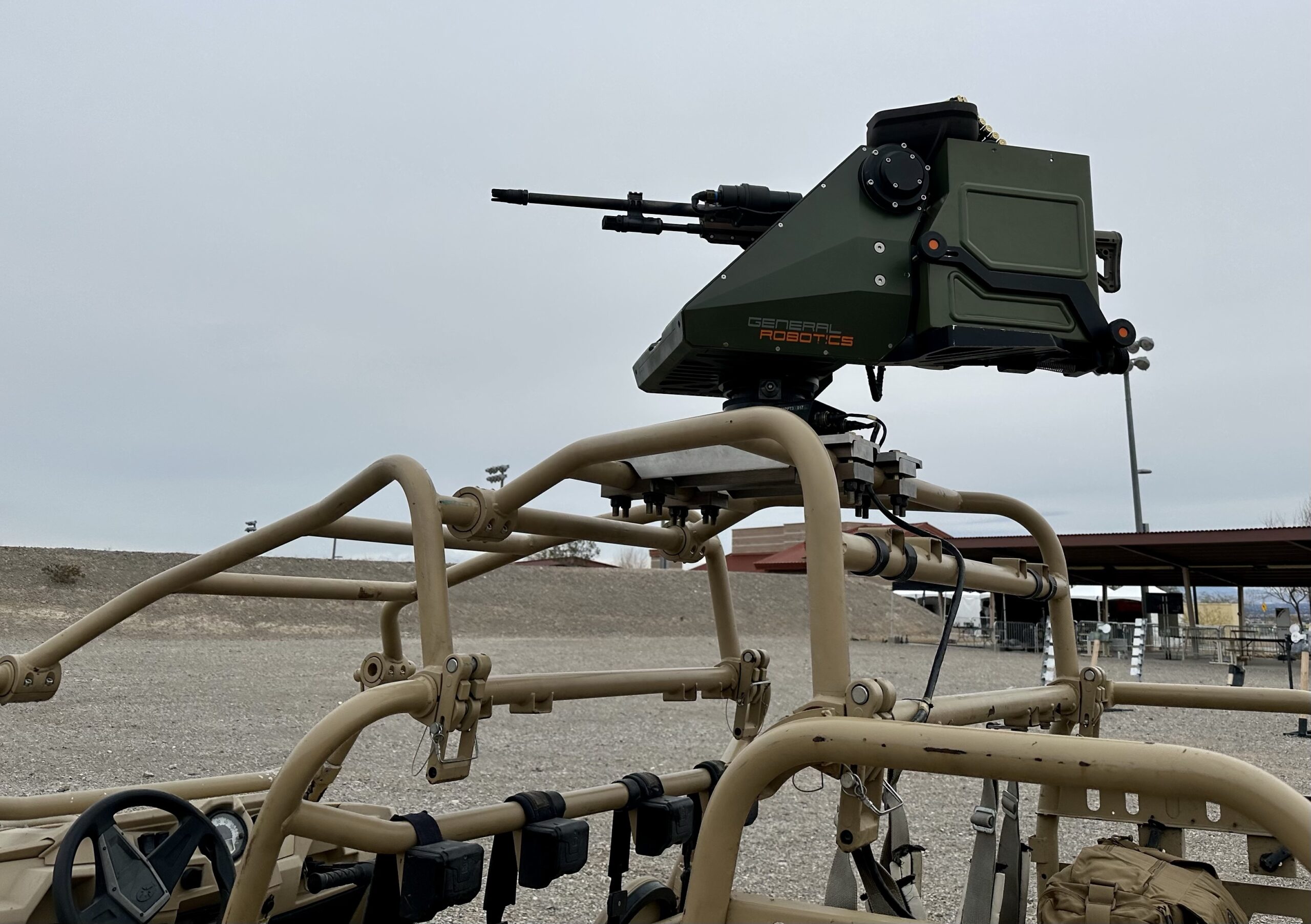
PITBULL can be statically employed or mounted to land, air, and sea vehicles. It incorporates an EO/IR sensor package with auto zoom and optical focus along with an eye safe laser range finder. Additionally, there are two rear cameras for weapon and ammo management.
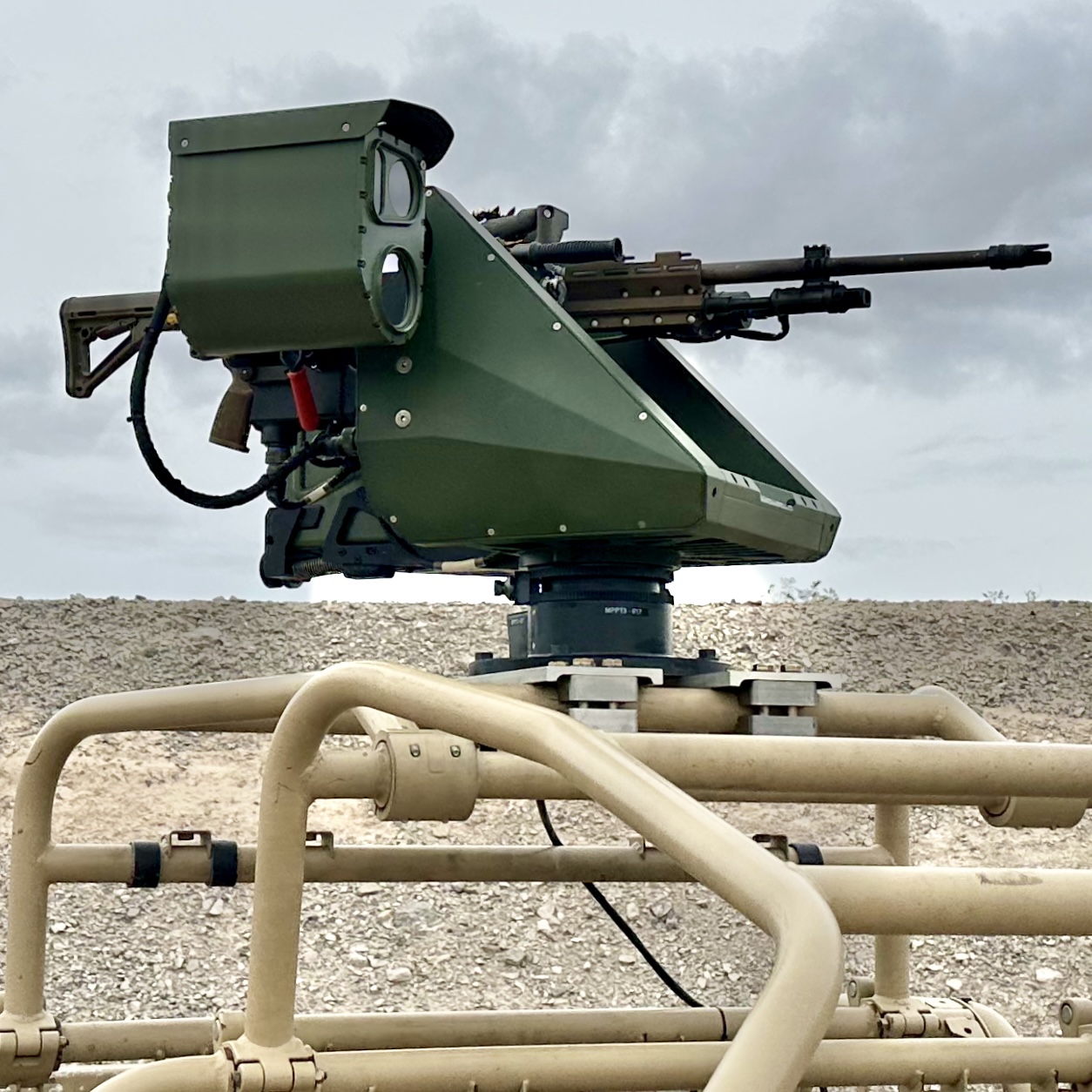
The brains of the system is the Remote Control Unit, a large touchscreen tablet. The system slews to items of interest via touching an area on the screen or via thumb controls. In addition to arming safeties, PITBULL features dual triggers to prevent accidental engagement. The connection is wireless with “Point to Point” secured communication.
PITBULL weighs 85Kg and is 60cm tall. It slews 360 degrees at a rate of 90 degrees per second. Elevation is approximately +60 degrees to -30 degrees depending on mounted weapon. PITBULL will accept a wide variety of machine guns besides the MG 338.
During AUSA, SIG had paired the MG 338 with an AimLock RWS, but this new business acquisition solidifies SIG’s commitment to the concept. I spoke with SIG CEO Ron Cohen about PITBULL and he was very enthusiastic about how well the system paired with the long range of the MG 338 saying, “Imagine being able to remotely and precisely engage a target a mile away from the PITBULL while you are safe inside a bunker. The MG 338 gives you the range of a .50 but with precision.”
Below is SIG SAUER’s press release regarding the acquisition.
SIG SAUER Acquires General RoboticsNEWINGTON, N.H., (March 16, 2023) – SIG SAUER is extremely excited to announce the acquisition of General Robotics, one of the world’s premier manufacturers of lightweight remote weapon stations and tactical robotics for manned and unmanned platforms and anti-drone applications.
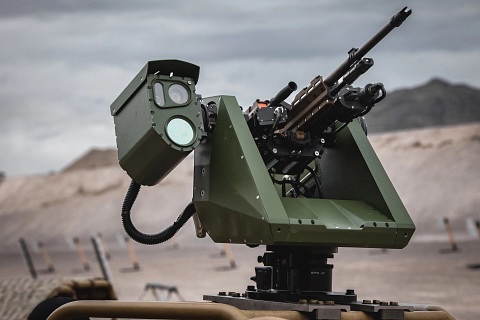
Ron Cohen, President and CEO, SIG SAUER, Inc. began, “This acquisition will greatly enhance SIG SAUER’s growing portfolio of advanced weapon systems. The team at General Robotics is leading the way in the development of intuitive, lightweight remote weapon stations with their battle-proven solution.”
Recently, the U.S. Army selected the SIG SAUER lightweight machine gun (XM250), automatic rifle (XM7), and high-pressure hybrid ammunition for the Next Generation Squad Weapons (NGSW) program, representing a historic step forward in weapons technology. The NGSW program is currently in the early stages of adoption and the U.S. Army will field the weapons at the squad level in 2023.
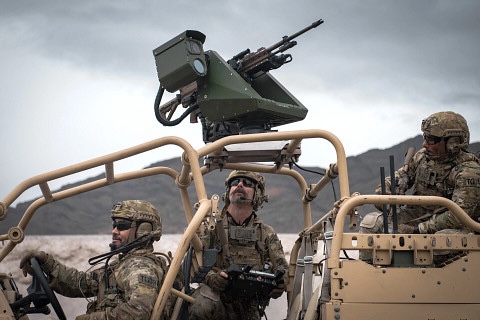
“The combination of the General Robotics remote weapons station with SIG SAUER’s lightweight squad weapons and high-pressure hybrid ammunition will revolutionize small arms for military forces worldwide. This acquisition exponentially increases the capabilities of our lightweight weapon systems delivering transformative advancements in mobility, greater lethality and battle tested force protection for today’s warfighters,” continued Cohen.
“General Robotics and all our employees are honored to join forces with global defense leader SIG SAUER to integrate our platforms into a single solution to support military units around the world,” concluded Shahar Gal, CEO, General Robotics.
